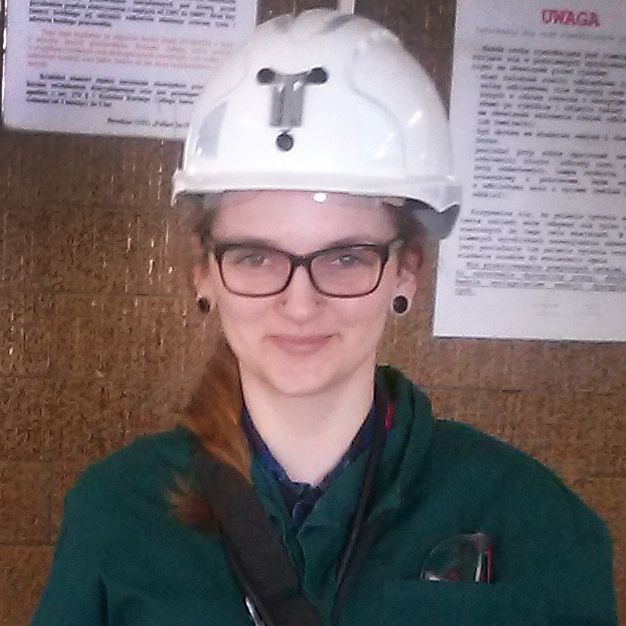fot. archiwum prywatne
mgr inż. MARTA URBANIAK
Po uzyskaniu tytułu magistra z socjologii powiedziałam sobie: „No, Marta, czas się ustatkować, praca, dom, rodzina, kot, regularne podlewanie kwiatków…”. I jak to zwykle u mnie bywa, zrobiłam całkiem na odwrót…
|
CERN MOJA HISTORIA
|
Po uzyskaniu tytułu magistra z socjologii powiedziałam sobie: „No, Marta, czas się ustatkować, praca, dom, rodzina, kot, regularne podlewanie kwiatków…”. Jak to zwykle u mnie bywa, zrobiłam całkiem na odwrót i stwierdziłam, że zacznę studiować fizykę. Po pierwszym wykładzie wiedziałam, że znalazłam się w miejscu, w którym chcę zostać na długo. Tak też się stało – właśnie kończę drugi rok w Szkole Doktorskiej Uniwersytetu Śląskiego. Od drugiego roku studiów związałam się z grupą badawczą* skupioną wokół eksperymentu NA61/SHINE, realizowanego w CERN-ie. Podczas mojej pracy inżynierskiej i magisterskiej nie zajmowałam się związanymi z nim tematami, ale większość moich kolegów i koleżanek z grupy była aktywnie zaangażowana w badania prowadzone w Genewie. W związku z tym zawsze pozostawałam na bieżąco z aktualnie analizowanymi wynikami i planami na przyszłość. Pasja, wiedza i pogodne podejście do życia naszego zespołu utwierdziło mnie w przekonaniu, że po ukończeniu studiów magisterskich z fizyki nie chcę szukać pracy w korporacji lub innej firmie. Bo w jakim innym miejscu podczas spotkania, gdy mówisz, że masz tylko jedno pytanie dotyczące twojej pracy bądź jeden nowy wynik, zaczyna się godzinna, pełna pasji dyskusja przeplatana żartami i anegdotami, a czas jakby staje w miejscu? Po rozpoczęciu doktoratu dołączyłam do zespołu*, którego zadaniem jest rozwój i przygotowywanie układu detekcyjnego NA61/SHINE. Obecnie zajmuję się projektowaniem i budowaniem detektora składającego się ze światłowodów scyntylacyjnych. Określa on pozycję wiązki. Jego konstruowanie jest zajęciem rozwijającym i pochłaniającym. Łączy ze sobą takie umiejętności, jak projektowanie inżynierskie, symulacje komputerowe, elektronikę, a także wiedzę z zakresu fizyki oddziaływania promieniowania jonizującego z materią oraz optyki. Myślę, że dopiero podczas zastosowania tych umiejętności w praktyce można tak naprawdę zrozumieć i połączyć w całość wszystkie elementy, których uczymy się na studiach. Dodatkowym zadowalającym elementem w pracach nad detektorem są sytuacje, kiedy w sklepie budowlanym jakiś mężczyzna z wyraźnym przekąsem zadaje mi pytanie: ,,A co tam pani tak grzebie w tych śrubkach, kosiarka się pani popsuła?”. Można wtedy odpowiedzieć: ,,Właściwie nie. Buduję detektor promieniowania jonizującego, oparty na światłowodach scyntylacyjnych, który będzie wykorzystywany w eksperymencie w CERN-ie i szukam… (tu już można podać jakąś przyziemną nazwę)”. Satysfakcja jest bezcenna. Swoją pierwszą wizytę w Genewie mam jeszcze przed sobą. W lipcu 2021 roku odwiedzę to miejsce i poznam ludzi, z którymi dotychczas rozmawiałam tylko online. Nie mogę się doczekać. * Zespół badawczy „Zderzenia ciężkich jonów przy pośrednich i wysokich energiach”, do którego należę, jest koordynowany przez dr. hab. Seweryna Kowalskiego, prof. UŚ. Grupa ta działa w ramach zespołu badawczego Instytutu Fizyki Uniwersytetu Śląskiego „Fizyka jądrowa w badaniach oddziaływań i jej zastosowania”. Jest on zaangażowany w kilka projektów międzynarodowych, w tym w eksperyment NA61/SHINE. |
|






